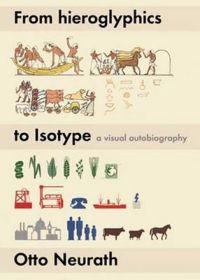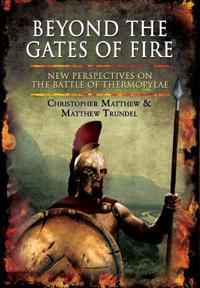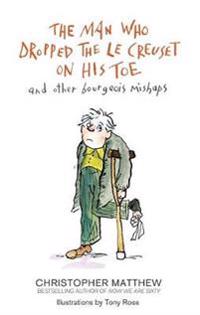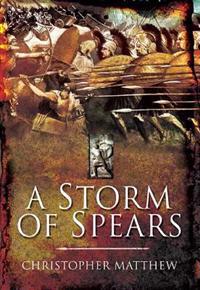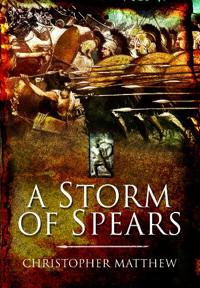From Hieroglyphics to Isotype (Inbunden)
avMatthew Eve, Christopher Burke, Matthew Eve
ISBN: 9780907259442 - UTGIVEN: 201010From 1943 until his death in December 1945, Austrian sociologist Otto Neurath worked tirelessly on numerous versionsof an innovative visual autobiography entitled From Hieroglyphics to Isotype. Now, sixty-five years later, comes the first publication of his full text, carefully edited from the origi[...]
Beyond the Gates of Fire (Inbunden)
avChristopher Matthew, Matthew Trundel
ISBN: 9781848847910 - UTGIVEN: 2013-04The Battle of Thermopylae in 480 BC is one of the most famous battles in history. The heroism of the 300 Spartans who opted to remain behind to face the full might of the Persian host while their Greek allies made good their escape has become the stuff of legend. The story still inspires novelists [...]
Hiring Great People (Häftad)
avKevin Klinvex, Matthew S. O'Connell, Christopher P. Klinvex
ISBN: 9780070718722 - UTGIVEN: 199810Hiring Great People removes the guesswork from the hiring process, giving you solid, no-nonsense tools and processes to identify and attract your industry's highest performing employees. Look to this dynamic book for advertising and public relations techniques proven to catch the attention of the br[...]
Nineteenth-century Britain (Häftad)
avChristopher Harvie, Colin Matthew
ISBN: 9780192853981 - UTGIVEN: 200008First published as part of the best-selling The Oxford Illustrated History of Britain, Christopher Harvie and Colin Matthew's Very Short Introduction to Nineteenth-Century Britain is a sharp but subtle account of remarkable economic and social change and an even more remarkable political stability.[...]
Ice Magic (Häftad)
avMatthew F. Christopher
ISBN: 9780316139915 - UTGIVEN: 1987-09The Byrd twins find a toy hockey game which magically predicts the outcome of hockey games played by the neighborhood team[...]
Midnight's Gate (Pocket)
avBei Dao, Matthew Fryslie, Christopher (EDT) Mattison
ISBN: 9780811215848 - UTGIVEN: 2005-05The Man Who Dropped the Le Creuset on His Toe and Other Bourgeois Mishaps (Inbunden)
avChristopher Matthew
ISBN: 9781408704653 - UTGIVEN: 2013-11The path trodden by the middle-aged middle classes in Britain, smooth though it may appear to the less privileged, is in reality a peculiarly dangerous one, dogged by its own set of terrors, pitfalls and opportunities for social humiliation. In The Man Who Dropped the Le Creuset on his Toe Christoph[...]
A Storm of Spears: Understanding the Greek Hoplite at War (Inbunden)
avChristopher Anthony Matthew
ISBN: 9781612001197 - UTGIVEN: 201205A Storm of Spears (Inbunden)
avChristopher Matthew
ISBN: 9781848842953 - UTGIVEN: 201111The backbone of classical Greek armies was the phalanx of heavily armoured spearmen, or hoplites. These were the soldiers that defied the might of Persia at Marathon, Thermopylae and Plataea and, more often, fought each other in the countless battles of the Greek city-states. For around two centuri[...]
The Tactics of Aelian (Inbunden)
avChristopher Matthew
ISBN: 9781848849006 - UTGIVEN: 2012-10Aelian's work on tactics is a hugely significant piece of ancient military literature, yet the last new edition in English was published in 1814. Although writing (in his native Greek) in the second century AD, Aelian drew heavily on earlier works, such as Asclepiodotus, to put together a comprehens[...]


